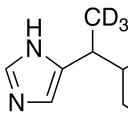English
Albanian
Arabic
Armenian
Azerbaijani
Belarusian
Bengali
Bosnian
Catalan
Czech
Danish
Deutsch
Dutch
English
Estonian
Finnish
Français
Greek
Haitian Creole
Hebrew
Hindi
Hungarian
Icelandic
Indonesian
Irish
Italian
Japanese
Korean
Latvian
Lithuanian
Macedonian
Mongolian
Norwegian
Persian
Polish
Portuguese
Romanian
Russian
Serbian
Slovak
Slovenian
Spanish
Swahili
Swedish
Turkish
Ukrainian
Vietnamese
Български
中文(简体)
中文(繁體)
Microbial Cell Factories 2019-May
Only registered users can translate articles
Log In/Sign up
The link is saved to the clipboard
The most complete medicinal herbs database backed by science
- Works in 55 languages
- Herbal cures backed by science
- Herbs recognition by image
- Interactive GPS map - tag herbs on location (coming soon)
- Read scientific publications related to your search
- Search medicinal herbs by their effects
- Organize your interests and stay up do date with the news research, clinical trials and patents
Type a symptom or a disease and read about herbs that might help, type a herb and see diseases and symptoms it is used against.
*All information is based on published scientific research





